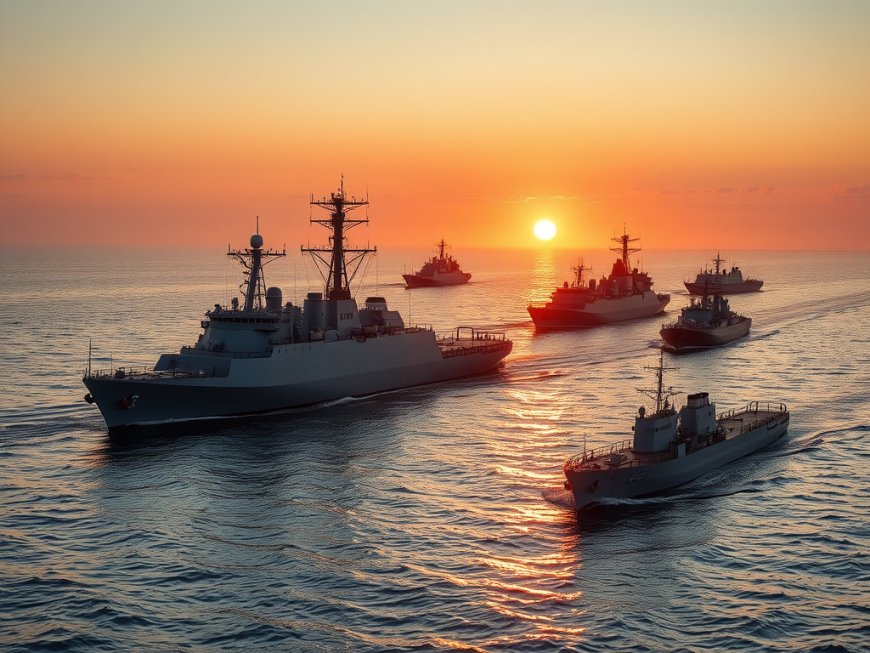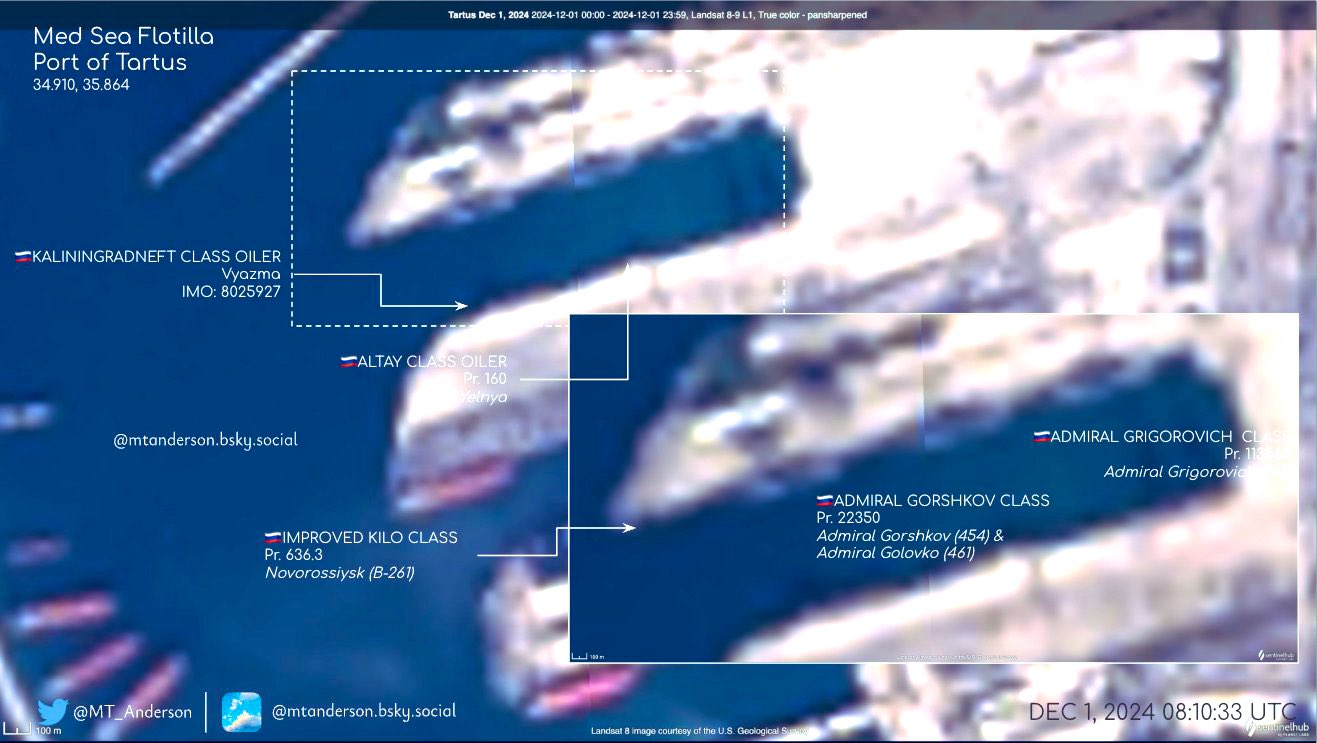Russia Withdraws Entire Naval Fleet from Tartus Amid Escalating Syrian Conflict
Satellite imagery from December 3, 2024, reveals Russia has withdrawn its naval fleet from the Tartus base in Syria, including three frigates, a submarine, and support ships. This significant move amid advancing Syrian opposition raises questions about Russia's military strategy and future involvement in Syria, potentially weakening support for the Assad regime.

Introduction
Satellite imagery dated December 3, 2024, has revealed that Russia has withdrawn its entire naval fleet from the Tartus naval base in Syria. This withdrawal includes three war frigates, a submarine, and two auxiliary ships, marking a significant development in Russia's military involvement in the region.

Details of the Withdrawn Fleet
Russia's naval fleet withdrawal from Tartus comprised the following vessels:
- Frigate "Admiral Gorshkov"
- Frigate "Admiral Golovko"
- Frigate "Admiral Grigorovich"
- Submarine "Novorossiysk"
- Two auxiliary oil tankers
The withdrawal comes at a critical time as the Syrian opposition forces continue their rapid southward advances, nearing the city of Hama. Hama lies approximately 80 kilometers northeast of Tartus, intensifying concerns over the security of the strategically important naval base.
The Strategic Importance of Tartus Base
The Tartus naval base holds significant importance for Russia as it serves as the only major Russian naval installation outside the former Soviet Union. It has been a cornerstone of Russia's military strategy in the Mediterranean, providing logistical support, a regional foothold, and a projection of power.
However, this withdrawal raises speculation about Moscow's future intentions in Syria. Analysts suggest that this move may indicate Russia's reluctance to commit additional reinforcements in support of the Syrian regime in the near term.
Reasons Behind the Withdrawal
While Russia has not made an official statement regarding the withdrawal, several key factors could explain this decision:
- Advancing Syrian Opposition Forces
The opposition's advances toward Hama have put Tartus within potential range of conflict, prompting Russia to safeguard its fleet. - Geopolitical Constraints
Due to Turkey's adherence to the Montreux Convention, Russian warships cannot return to their Black Sea bases through Turkish straits. This leaves Russia with limited options for redeployment. - Expected Redeployment
It is likely that Russia will station the withdrawn vessels at its bases in northwestern Russia and the exclave of Kaliningrad. These locations provide strategic advantages while avoiding restrictions imposed by Turkey.
Table: Summary of the Withdrawn Fleet
Vessel Name
Type
Current Status
Admiral Gorshkov
War Frigate
Withdrawn from Tartus
Admiral Golovko
War Frigate
Withdrawn from Tartus
Admiral Grigorovich
War Frigate
Withdrawn from Tartus
Novorossiysk
Submarine
Withdrawn from Tartus
Two Auxiliary Tankers
Support Ships
Withdrawn from Tartus
Implications for Russia's Military Strategy
Diplomatic and Military Ramifications
The decision to withdraw the naval fleet could have significant diplomatic and military implications. It may signal a strategic recalibration of Russia's involvement in Syria, given the volatile situation on the ground. The withdrawal could also reflect Moscow's intent to avoid direct engagement should the Tartus base come under threat.
Impact on the Syrian Regime
The absence of Russian naval assets in Tartus could be viewed as a potential weakening of Moscow's military support for the Assad regime. This development might embolden opposition forces and further complicate the dynamics of the Syrian conflict.
Turkey's Role in Blocking Return Routes
A critical factor influencing Russia's naval strategy is Turkey's commitment to the Montreux Convention, which governs the passage of warships through the Bosporus and Dardanelles straits. With Turkey barring Russian warships from returning to Black Sea ports due to ongoing geopolitical tensions, Moscow's naval options remain limited.
Future of Russia's Military Presence in Syria
This withdrawal has revived debates over the future of Russia's military presence in Syria. While the Tartus base is of strategic importance, the current geopolitical and military environment may compel Russia to reassess its long-term commitments in the region.
Key Considerations for Russia:
- Geopolitical Calculations: The decision to withdraw the fleet may be a strategic move to reduce exposure to risk while maintaining a foothold in Syria.
- Financial and Logistical Constraints: Supporting large-scale military operations abroad is resource-intensive, and Russia may prioritize domestic and regional objectives.
- Shift in Priorities: This withdrawal could signal a broader shift in Russia's focus toward other geopolitical theaters, such as its northern and western borders.
Conclusion
The complete withdrawal of Russia's naval fleet from Tartus marks a pivotal moment in the Syrian conflict and raises pressing questions about the future of Russian involvement in the region. As the opposition forces gain ground and the geopolitical landscape evolves, Russia's military strategy in Syria may undergo significant changes. Whether this withdrawal is a temporary precaution or a long-term shift in policy remains to be seen.

